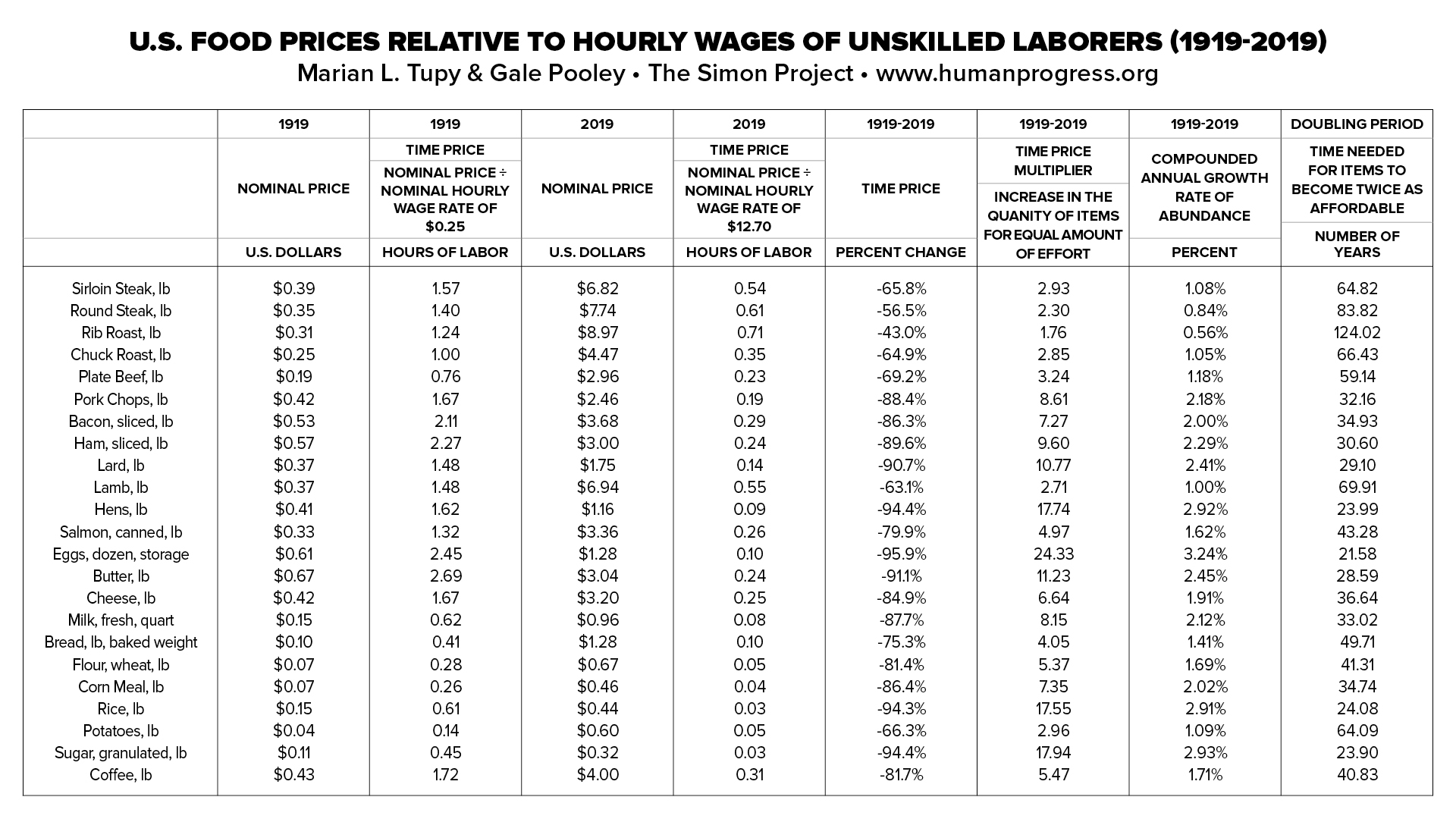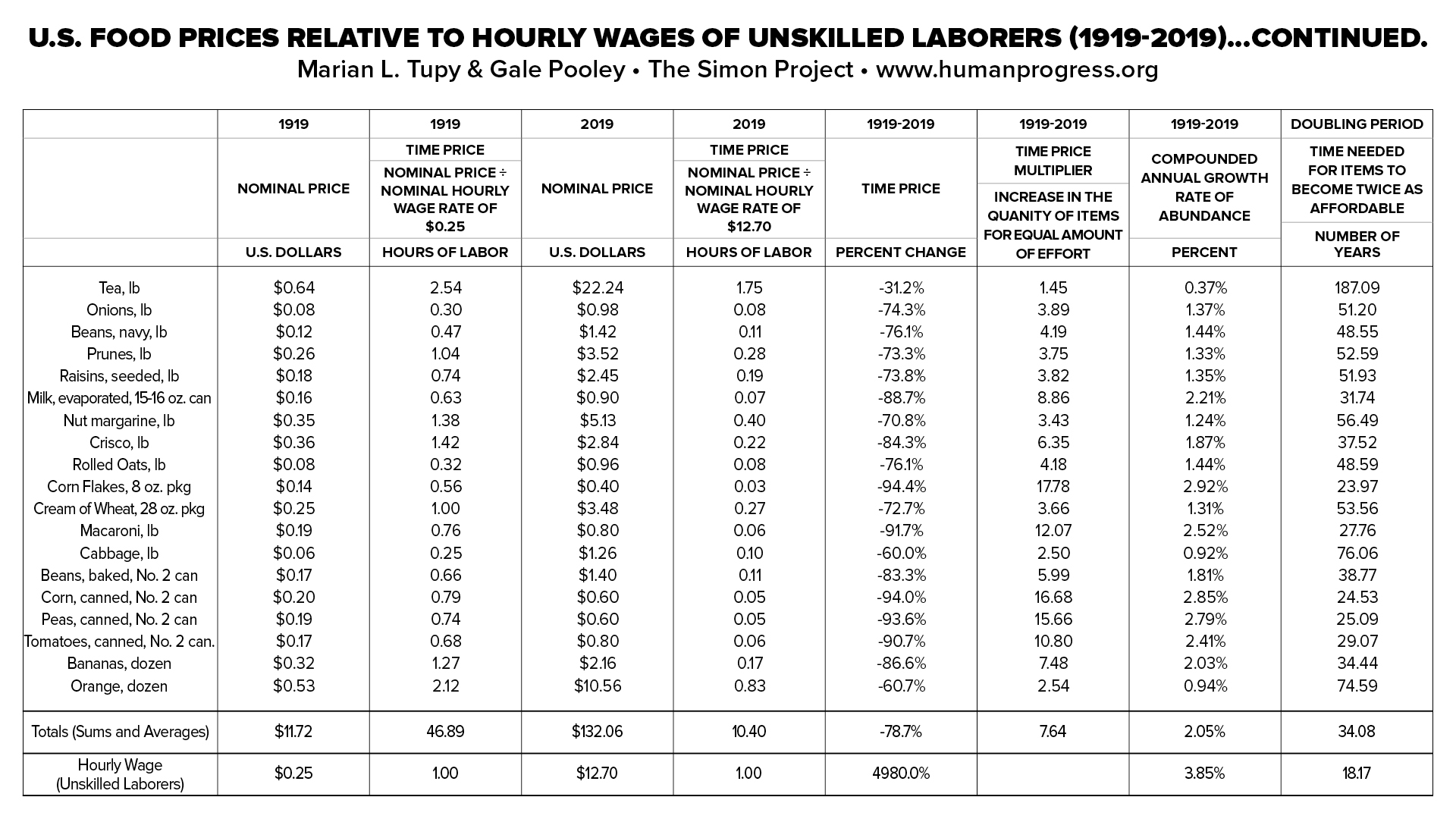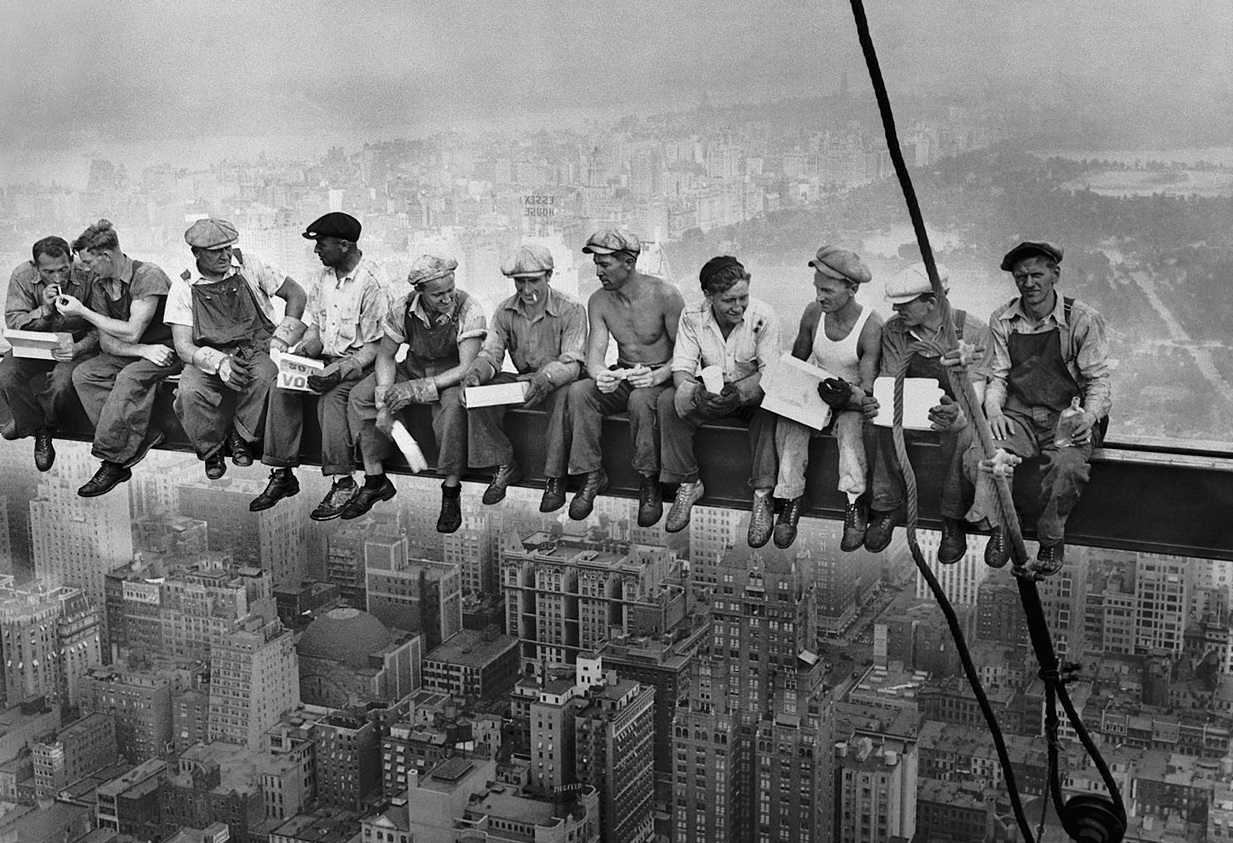Speaking to an enthusiastic crowd at the South by Southwest conference in Texas on March 9, Congresswoman Alexandria Ocasio-Cortez (D-NY) stated that “Capitalism is an ideology of capital – the most important thing is the concentration of capital and to seek and maximise profit … we’re reckoning with the consequences of putting profit above everything else in society. And what that means is people can’t afford to live.” “Capitalism is irredeemable,” she concluded.
The cost of living isn’t easy to calculate. A declining cost of home appliances, for example, needs to be juxtaposed with the growing cost of healthcare, etc. In the space of this short op-ed, I want to focus on an expense that is intimately tied up with the very survival of human beings – the price of food. Throughout the history of our species, people lived in a state of undernourishment. In developed countries today, obesity is a growing problem and food is cheaper than ever.
In fact, basic food items in America have become almost eight times cheaper relative to unskilled labor over the last 100 years.
This analysis of the cost of food in America over the last century begins with Retail Prices, 1913 to December 1919: Bulletin of the United States Bureau of Labor Statistics, No. 270, which was published in 1921. On pages 176-183, we encounter nominal prices of 42 food items – ranging from a pound of sirloin steak to a dozen oranges – as registered in the city of Detroit in 1919. Those can be seen in the second column of the attached graphic.


Our second step was to express those nominal prices in terms of hours of human labor. Together with Gale Pooley, associate professor of business management, Brigham Young University-Hawaii, we took the index of hourly wages of unskilled laborers (i.e., workers at the bottom of the income ladder) between 1774 and 2016 from www.measuringworth.com and re-indexed it to 1919. That gave us a nominal wage rate of unskilled laborers amounting to $0.25 per hour in 1919. The nominal prices of food relative to nominal wages in 1919 can be seen in column 3.
Our third step was to find the nominal prices of the same goods (including, of course, the same quantity of those goods) on www.walmart.com, which is where most unskilled laborers shop in 2019. Those findings can be seen in column 4. According to our calculations, the nominal wage rate of unskilled laborers amounts to about $12.70 per hour today. As such, the nominal prices of food relative to nominal wages in 2019 can be seen in column 5.
What did we find?
- The time price (i.e. nominal price divided by nominal hourly wage) of our basket of commodities fell from 47 hours of work to ten (see the Totals line in column five).
- The unweighted average time price fell by 79 percent (see the Totals line in column six).
- Put differently, for the same amount of work that allowed an unskilled laborer to purchase one basket of the 42 commodities in 1919, he or she could buy 7.6 baskets in 2019 (see the Totals line in column seven).
- The compounded rate of “affordability” of our basket of commodities rose at 2.05 percent per year (see the Totals line in column eight).
- Put differently, an unskilled laborer saw his or her purchasing power double every 34 years (see the Totals line in column nine).
Pay particular attention to column six and note that declining prices result in exponential, not linear, gains. Thus, a 75 percent decline in price allows a person to purchase four items; a 90 percent decline results in ten items; a 95 percent decline in 20 items; and a 96 percent decline in 25 items. A 1 percentage point change from 95 percent to 96 percent, in other words, enhances the gain by 25 percent.
Thus eggs, which declined by 96 percent in terms of time price between 1919 and 2019, allow the unskilled laborer today to purchase 24 times as many eggs as an unskilled laborer was able to purchase for the same amount of work a century ago. That’s a massive improvement – even if we ignore the likelihood that an unskilled laborer today performs work that is less physically strenuous and less dangerous than it was in 1919.
Far from being irredeemable, therefore, a market that’s allowed to function relatively freely and competitively has delivered and can continue to deliver enormous benefits to all people, especially those at the bottom of the income ladder.
Joseph Schumpeter, the famous economist who served as Austrian minister of finance in 1919, observed that the “capitalist engine is first and last an engine of mass production which unavoidably also means production for the masses … It is the cheap cloth, the cheap cotton and rayon fabric, boots, motorcars and so on that are the typical achievements of capitalist production, and not as a rule improvements that would mean much to the rich man. Queen Elizabeth owned silk stockings. The capitalist achievement does not typically consist in providing more silk stockings for queens but in bringing them within reach of factory girls.”
To those silk stockings we can now add food.
For Blue-Collar Workers and Food Prices in America (1919-2019) go here.
This first appeared in CapX.

